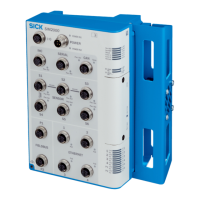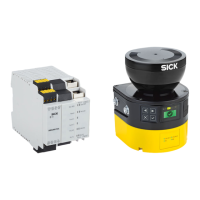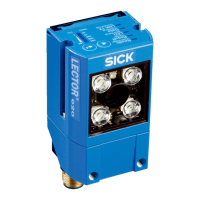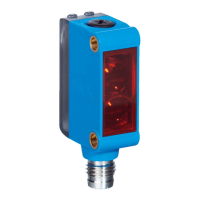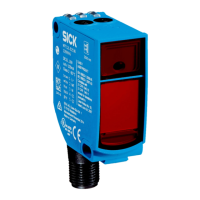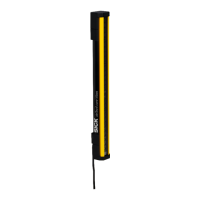Figure 23: Stopping distance as a function of the vehicle’s speed
v Speed
S
A
Stopping distance
Z Supplements
S
L
Protective field length for the relevant range of speeds
S
A
= S
Br
+ S
AnF
+ S
AnS
W
her
e:
•
S
A
= stopping distance, in millimeters (mm)
•
S
Br
= braking distance, from the vehicle documentation, in millimeters (mm)
•
S
AnF
= distance covered during the vehicle control’s response time (including
signal propagation time), from the vehicle documentation, in millimeters (mm)
•
SAnS
= distance traveled during the response time of the safety camera sensor, in
millimeters (mm)
The distance
AnS
depends on t
he
response time of the safety camera sensor and
the speed of the vehicle. The distance S
AnS
is calculated using the following
formula:
S
AnS
= t
R
× V
ma
x
W
here:
°
t
R
= r
e
sponse time of the safety camera sensor, in seconds (s)
°
V
max
= maximum speed of the vehicle, from the vehicle documentation, in
millimeters per second (mm/s) (If you define a number of monitoring cases
with different protective fields: V
max
= maximum speed of the vehicle in the
current monitoring case)
4.3.14 Fall protection
The safety camera sensor is mounted in a mobile application, e.g., on an AGV. When
used f
or f
all protection, the safety camera sensor detects openings in the floor and
protects the vehicle against falling.
The camera system is mounted at a minimum height of 50cm.
The contour detection field is configured via a teach-in process and corresponds to the
floor level in front of the vehicle.
PROJECT PLANNING 4
8025919/1I9E/2023-01-09 | SICK O P E R A T I N G I N S T R U C T I O N S | safeVisionary2
37
Subject to change without notice
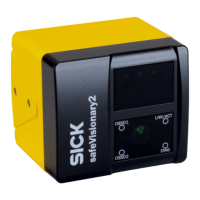
